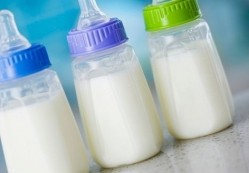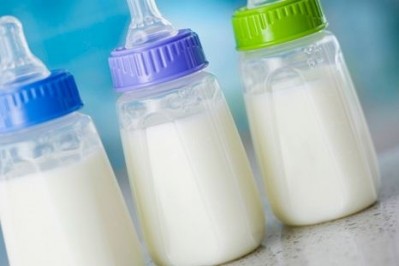EFSA proposes cut in maximum infant, follow-on formula protein levels

In its Scientific Opinion on the essential composition of infant and follow-on formula, published yesterday, EFSA proposed that maximum protein levels be reduced from 3g per 100kcal in infant formula and 3.5g per 100kcal in follow-on formula.
Drafted by the EFSA Panel on Dietetic Products, Nutrition and Allergies (NDA), the Opinion recommended new maximum levels of 2.5g per 100kcal in milk protein-based infant and follow-on formulae.
In those containing hydrolyzed protein and isolated soy protein, EFSA settled on protein levels of 2.8g per 100kcal.
Justifying its recommendations, the NDA Panel said there was “no evidence of a physiological need for such high protein intakes.”
It added that “current protein intakes are well above requirements.”
Recommended minimum protein levels were set at 1.8g per 100kcal in milk protein-based infant and follow-on formula, and 2.25g per 100kcal in products containing isolated soy protein.
No minimum intake level was recommended for hydrolyzed protein-based products, for which EFSA said the “safety and suitability of each...should also be established by clinical evaluation in the target population prior to use.”
Energy, fat and carbohydrates
The Scientific Opinion, which will be passed on to the European Commission (EC) for consideration, was based on a review by the NDA Panel of advice issued by the European Commission’s pre-EFSA Scientific Committee on Food in 2003.
Taking into account fresh research, including its own 2013 Scientific Opinion on nutrient requirements and dietary intakes of infants and young children in the EU, the NDA Panel issued recommendations on energy, macronutrients and micronutrients in infant and follow-on formulae.
EFSA reiterated the Scientific Committee on Food’s 2003 recommendation on energy - standing by its recommended 60kcal per 100ml minimum and 70kcal per 100ml maximum in infant and follow-on formula.
Proposed amounts for fat and carbohydrate do “not differ significantly” from current regulation either.
The NDA Panel recommended maximum levels of 6g of fat per 100kcal and 14g of carbohydrate per 100kcal in infant and follow-on formula manufactured using milk protein, hydrolyzed protein, and isolated soy protein.
EFSA also cemented its earlier claim, made its April 2014 draft Scientific Opinion, that “there is no need” to add arachidonic acid (ARA), eicosapentaenoic acid (EPA), non-digestible oligosaccharides, probiotics or synbiotics, chromium, fluoride, taurine and nucleotides.
“Upper limits”
Alongside its recommendations, the NDA Panel reminded readers that its revised nutrient intake levels for infant and follow-on formula should be interpreted as “upper limits” not as “target values.”
“The addition in amounts higher than those serving a benefit or the inclusion of unnecessary substances in formulae may put a burden on the infant’s metabolism and/or on other physiological function, as substances which are not used or stored have to be excreted,” said EFSA.
“These minim amounts should be understood as target values which cover the nutritional needs of virtually all infants born at term for optimal growth and development, whereas maximum amounts are driven by safety aspects and also taking into account technological considerations and should not be interpreted as target values but rather as upper limits of a range, which should not be exceeded.”
Specialised Nutrition Europe (SNE), which represents infant and follow-on formula manufacturers in EU Member States, has meanwhile welcomed the new EFSA Scientific Opinion.
“Our industry is deeply committed to providing safe and high quality products that meet the specific nutritional needs of infants and young children. We are pleased that the final opinion recognizes the value of these products and their contribution to supporting the nutritional needs of these vulnerable consumers,” said Roger Clarke, president, SNE.
“We now hope that this scientific advice will be integrated into regulatory decisions for infant, follow-on formulae and young-child formulae in way ensures the best nutrition during the first years of life and encourages safe innovation based on science,” said Clarke.








